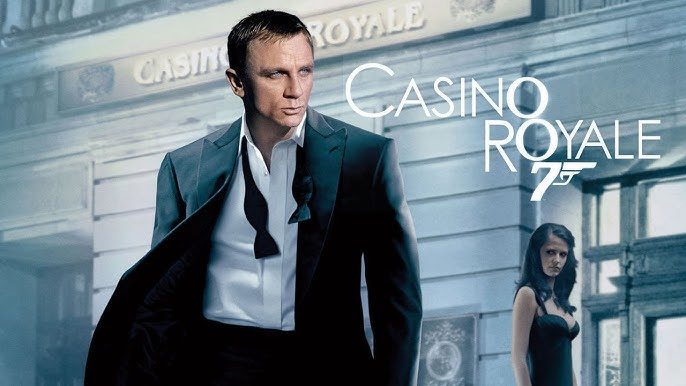Casino Royale (2006)

Casino Royale (2006) is a landmark film in the James Bond franchise, marking a significant turning point both for the series and for the character of James Bond himself. Released in 2006, it is the 21st installment in the Eon Productions’ James Bond series and serves as a reboot, introducing a fresh take on the iconic spy. This film is also notable for being the third adaptation of Ian Fleming’s 1953 novel of the same name, and it brings a contemporary edge to the classic story.
Directed by Martin Campbell, Casino Royale reinvents the Bond series by casting Daniel Craig in the role of James Bond, replacing Pierce Brosnan. Craig’s portrayal of Bond is notably grittier and more vulnerable than his predecessors, providing a raw and unfiltered look at the character’s early days as a 00 agent. This film explores Bond’s initial forays into the world of espionage, presenting his development from a reckless operative to a more seasoned and strategic spy.
The plot of Casino Royale revolves around Bond’s mission to thwart a terrorist financier, Le Chiffre, played by Mads Mikkelsen. Le Chiffre is a high-stakes gambler who uses his casino to launder money for terrorist organizations. Bond’s mission is to defeat him in a high-stakes poker game at the Casino Royale in Montenegro, a high-risk endeavor that serves as the film’s central focus. This poker game is not just a backdrop for the story but is crucial to the narrative, representing Bond’s strategic prowess and psychological resilience.
One of the film’s most notable features is its emphasis on realism and character development. Unlike many of its predecessors, Casino Royale does not rely heavily on extravagant gadgets or over-the-top action sequences. Instead, it prioritizes character-driven storytelling and intense, realistic action. The film’s depiction of Bond’s vulnerability and emotional depth sets a new standard for the character, making him more relatable and human. Craig’s performance is complemented by a strong supporting cast, including Eva Green as Vesper Lynd, Bond’s love interest and a key figure in his emotional journey.

The film’s cinematography, helmed by Phil Meheux, is another standout element. The visually striking scenes, combined with a gripping musical score by David Arnold, enhance the film’s suspense and drama. The opening sequence, featuring a thrilling parkour chase, sets the tone for the film’s dynamic action and high-stakes tension.

Casino Royale also reinvigorates the Bond franchise with its modern sensibilities and complex storytelling. It explores themes of trust, betrayal, and the personal cost of the spy life, offering a deeper and more nuanced portrayal of Bond than many of the earlier films. The film’s success both critically and commercially confirms its impact, leading to a successful continuation of Daniel Craig’s tenure as Bond in subsequent films.

In conclusion, Casino Royale (2006) stands out as a pivotal entry in the James Bond series. Its rebooted approach, realistic portrayal of Bond, and emphasis on character development distinguish it from its predecessors. By reimagining the iconic spy with a fresh perspective, Casino Royale revitalizes the franchise and sets a new benchmark for future installments. Its combination of gripping narrative, strong performances, and modern aesthetics make it a memorable and influential film in the history of James Bond.











